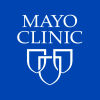Request Demo
Last update 08 May 2025
Cocaine
Last update 08 May 2025
Basic Info
Synonyms- |
Introduction- |
Related
4
Drugs associated with CocaineTarget |
Mechanism Cocaine inhibitors |
Active Org. |
Originator Org. |
Active Indication |
Inactive Indication- |
Drug Highest PhasePhase 1 |
First Approval Ctry. / Loc.- |
First Approval Date20 Jan 1800 |
Target |
Mechanism Cocaine inhibitors |
Active Org. |
Originator Org. |
Active Indication |
Inactive Indication- |
Drug Highest PhasePreclinical |
First Approval Ctry. / Loc.- |
First Approval Date20 Jan 1800 |
Target |
Mechanism Cocaine inhibitors |
Active Org.- |
Originator Org. |
Active Indication- |
Inactive Indication |
Drug Highest PhasePending |
First Approval Ctry. / Loc.- |
First Approval Date20 Jan 1800 |
1
Clinical Trials associated with CocaineNCT04884594
Intravenous Administration of AAV8-human Cocaine Hydrolase to Treat Cocaine Use Disorder
The purpose of this study is to test the safety of a novel gene viral vector treatment for adults with cocaine use disorder-sustained remission. This gene regulates an enzyme (cocaine hydrolase) that breaks down cocaine into inactive substances, thereby decreasing the pleasurable feeling this drug usually provides.
Start Date08 Oct 2021 |
Sponsor / Collaborator  Mayo Clinic Mayo Clinic [+1] |
100 Clinical Results associated with Cocaine
Login to view more data
100 Translational Medicine associated with Cocaine
Login to view more data
0 Patents (Medical) associated with Cocaine
Login to view more data
28
Literatures (Medical) associated with Cocaine15 Jul 2024·ChemBioChem
Amodiaquine Nonspecifically Binds Double Stranded and Three‐Way Junction DNA Structures
Article
Author: Shoara, Aron A ; Kaiyum, Yunus A ; Slavkovic, Sladjana ; Churcher, Zachary R ; Simine, Lena ; Liu, Tao ; Johnson, Philip E
01 Jan 2024·Biochemical and Biophysical Research Communications
Novel partial reduction of the humanized anti-cocaine mAb h2E2 for selective cysteine labeling
Article
Author: Norman, Andrew B ; Kirley, Terence L
26 Jul 2023·ACS applied materials & interfaces
Electrochemically Exfoliated Graphene Oxide for Simple Fabrication of Cocaine Aptasensors.
Article
Author: Lei, Yuting ; Chen, Jiyun ; Tavares, Ana C ; Perreault, Jonathan ; Trahan, Pierre-Luc ; Ossonon, Benjamin D
1
News (Medical) associated with Cocaine13 Aug 2023
Researchers found that using a gene therapy to elevate levels of GDNF, a brain protein, could keep alcohol cravings in monkeys at bay.
Humans—and our ancestors—have been drinking alcohol for thousands of years, and likely becoming addicted to it for just as long. Yet, even as our understanding of the biological underpinnings of addiction has progressed enough for scientists to develop effective drugs, many people with alcohol use disorder, or AUD, still find themselves trapped in a loop of abstinence and relapse.
But if results in monkeys bear out in humans, a new gene therapy might be able to interrupt the cycle. In the results of a study published Aug. 14 in Nature Medicine, scientists from Ohio State University Wexner Medical Center and School of Medicine, Oregon Health and Science University, the Oregon National Primate Center and the University of California, San Francisco reported that they were able to halt AUD in primate models by expressing a key brain chemical called glial cell line-derived neurotrophic factor, or GDNF, which suppressed their desire to consume large amounts of alcohol for months at a time.
“Overall, our findings indicate that GDNF gene therapy could diminish reintroduction-associated alcohol intake in our primate model,” co-corresponding author Krystof Bankiewicz, M.D., Ph.D., a researcher at Ohio State, said in a press release. “We believe this approach shows merit for further study as a promising therapy for AUD and possibly other substance-abuse disorders.”
GDNF is found in several regions of the adult brain containing neurons that secrete the neurotransmitter dopamine, where it protects them from damage—including the kind caused by alcoholism. Its potential to curb alcohol consumption has been investigated for more than a decade; other compounds studied as a treatment for AUD, like the hallucinogen ibogaine, may work at least in part by upregulating GDNF.
Previous studies suggested that alcohol consumption directly downregulates the gene responsible for encoding GDNF. Additionally, these studies demonstrated that overexpressing this gene can attenuate alcohol cravings in mice. Such findings led Bankiewicz’s team to investigate whether a gene therapy that upregulates the GDNF gene in the mesolimbic reward pathway—a dopamine-rich tract through several brain regions that is well known for its role in addiction—could be a practical way to treat AUD in primates without the risk of relapse.
To do that, the scientists first habituated eight macaque monkeys to alcohol. Next, they infused an adeno-associated virus vector that encoded the GDNF gene into the brains of four of them, doing so directly into the brain’s ventral tegmental area, or VTA. The VTA is a key player in the mesolimbic reward pathway, as it’s the site of dopaminergic neurons that send signals to other regions downstream. The other four primates, serving as controls, received a saline solution.
The researchers then exposed the primates to alcohol in cycles, mirroring the effects of abstinence and relapse. They withheld alcohol for four weeks at a time, then offered it to them for another four weeks. This continued for multiple rounds.
The scientists tested the monkeys’ blood alcohol levels throughout the experiment. They found that while the controls had consistently higher blood alcohol levels, indicating that they were “relapsing” during exposure periods, they were undetectable most weeks in the treated primates. That suggests that by elevating GDNF, the gene therapy was indeed keeping their alcohol cravings at bay.
This is far from the first gene therapy for substance abuse. One of the earliest examples is a gene therapy that increased the number of dopamine receptors in the brains of mice, which decreased their interest in the drug. A little over a decade later, the Mayo Clinic’s anti-cocaine gene therapy—which works by a different mechanism—is recruiting for a phase 1 clinical trial. Researchers from the University of Arkansas have encoded anti-meth genes into mice that made it so the drug was less rewarded, reducing the amount of it in their brains.

Gene Therapy
Analysis
Perform a panoramic analysis of this field.
login
or

AI Agents Built for Biopharma Breakthroughs
Accelerate discovery. Empower decisions. Transform outcomes.
Get started for free today!
Accelerate Strategic R&D decision making with Synapse, PatSnap’s AI-powered Connected Innovation Intelligence Platform Built for Life Sciences Professionals.
Start your data trial now!
Synapse data is also accessible to external entities via APIs or data packages. Empower better decisions with the latest in pharmaceutical intelligence.
Bio
Bio Sequences Search & Analysis
Sign up for free
Chemical
Chemical Structures Search & Analysis
Sign up for free

